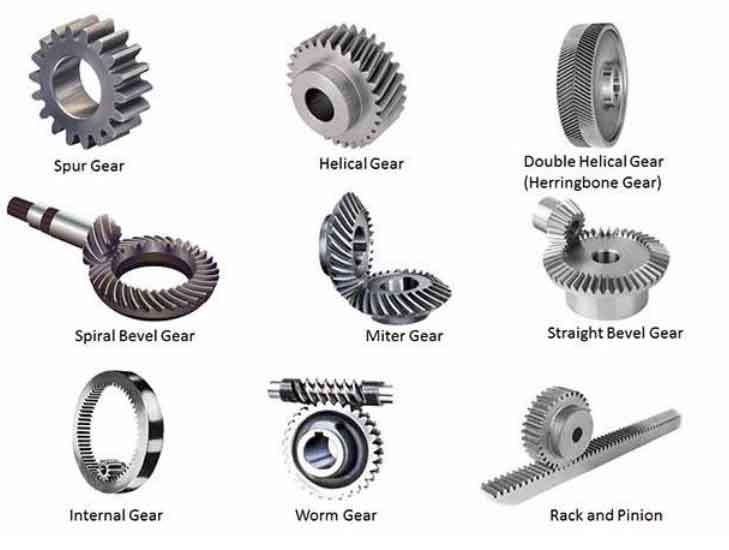Miter gears and internal gears are two different types of gears commonly used in mechanical systems. While both serve the purpose of transmitting rotational motion between two shafts, they have distinct characteristics and applications. Let’s compare these two gear types:

- Miter Gears:
- Configuration: Miter gears are a type of bevel gears that have the same number of teeth and pitch diameter. They are designed to transmit motion at a 90-degree angle.
- Tooth Orientation: The teeth of miter gears are straight and cut on the outer surface of the gear cone. They are oriented at a right angle to the gear axis.
- Efficiency: Miter gears provide efficient power transmission with low energy loss due to their straight tooth design and consistent contact ratio.
- Applications: Miter gears are commonly used in applications that require the transmission of motion and power between intersecting or perpendicular shafts. They are frequently found in machinery such as differential drives, right-angle drives, and power transmission systems.
- Internal Gears:
- Configuration: Internal gears are cylindrical gears with teeth cut on the inside surface of a hollow cylinder. They have a larger pitch diameter than the pinion gear that meshes with them.
- Tooth Orientation: The teeth of internal gears are curved and face inward. They mesh with a smaller pinion gear, which is located inside the gear.
- Efficiency: Internal gears generally have lower efficiency compared to miter gears due to their curved tooth profile, which results in a less favorable contact ratio and higher energy loss.
- Applications: Internal gears are commonly used in applications where space is limited or where a compact design is required. They are often found in mechanisms such as planetary gear systems, gear pumps, and gear reducers.
Miter gears are suitable for transmitting motion at a 90-degree angle and provide efficient power transmission. They are commonly used in applications that require right-angle drives. On the other hand, internal gears are useful when a compact design is necessary but may have lower efficiency due to their tooth profile. They are often employed in applications with space constraints, such as planetary gear systems. The selection of the gear type depends on the specific requirements of the application, including the desired angle of transmission, space limitations, and efficiency considerations.
